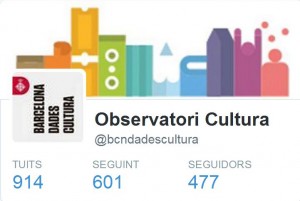For the past five years the Institut de Cultura de Barcelona (ICUB, Culture Institute of Barcelona) has conducted a survey of visitors to the city’s museums with the purpose of discovering the profile of people drawn to these facilities.
In the 2015 survey, three additional museums were included whereas surveys of the Picasso Museum were temporarily suspended. In all, thirteen of the city’s museum facilities participated.
The overall results of the survey indicate:
PLACE OF ORIGIN:
- The vast majority of visitors to Barcelona’s museums live abroad, especially in European countries, while only 17% are Barcelona residents.
- Fundació Joan Miró, Montjuïc Castle and the MUHBA in Plaça del Rei are the facilities that attract the highest proportion of foreign visitors.
- Museu Blau and Museu del Disseny are the museums with the highest proportion of visitors from Barcelona.
- The CCCB and Born CCM are the museums with the highest number of visitors from other parts of Catalonia.
LOYALTY:
- Over 80% of people are first-time visitors (except at the CCCB where 50% of people have visited on a previous occasion).
- Among visitors who are either from Barcelona or other parts of Catalonia, 41% have visited more than once.
SOURCES OF INFORMATION:
- Given that the vast majority of visitors are from abroad, it is clear that tourist information sources are largely responsible for the promotion of the city’s museums.
- By contrast, communication media, advertising, personal recommendations and prior visits to a museum are the sources most frequently cited by visitors from Barcelona or other parts of Catalonia.
The full report with the results of the 2015 survey is available for consultation (only available in Catalan).





